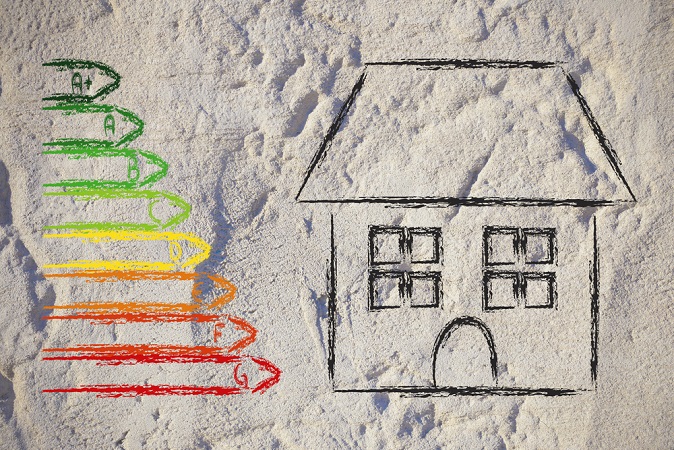The EeMAP-Energy Efficiency Mortgages Action Plan initiative aims to create a standardised “energy efficient mortgage” to reduce energy consumption in buildings and to demonstrate the efficiency mitigation effect on risk loans. The interview with Zsolt Toth, External Affairs & EU Liaison Manager Europe of RICS.
Which is the role of RICS in the EeMAP project? Can you describe your planned actions?
We are pleased to be at the forefront of this initiative to highlight the impact of energy efficiency on market value and lending risk, or in other words, to reinforce the link between building technical performance and loan performance. Our main role is to ensure that property valuers truly understand green issues impacting real estate and are fully equipped to meet the needs of mortgage banks and homeowners when assessing the potential value implications of energy efficiency features. We aim to do this by developing standardised valuation checklists that will explicitly require banks and valuers to take into consideration the improved risk profile of energy efficient properties. We also develop specialised training modules for professionals undertaking valuations for mortgage lending purposes.
What is the key to create an energy efficient mortgage for Europe and for Italy?
A number of ingredients are key to make this initiative succeed both in Italy and across Europe. First, the entire energy efficiency mortgage framework relies on trust and a carefully aligned interest chain among all the participating actors: financial institutions, regulators, energy assessors, utility companies, contractors and valuers. This mutual trust is underpinned by market transparency and reliable performance data. Green financing is a quickly growing market, however market actors still struggle with the current lack of standardised definitions, adequate data and robust measurement indicators. Finally, consumer demand for energy efficiency mortgages is crucial which can only be ensured by increasing consumer awareness of the benefits of energy efficiency.
Can you give me more details about the “green mortgages” for efficiency in residential and administrative buildings?
One of the key premises of the EeMAP initiative is that energy efficiency has a positive impact on credit risk. The incentives the energy efficiency mortgage will offer borrowers (e.g. reduced interest rates and/or increased loan amount) aim to reflect the reduced credit risk of these loans. Green mortgages will work well for borrowers either buying a new property or when considering to improve their existing one. It all depends on the current energy performance of the building and whether the mortgage is a new origination for a property to be purchased or a refinancing of an already owned property.
How create a positive legislative and financial framework in each Member States?
Policy makers should enforce regulation to make sure that market participants have access to reliable transaction and performance data. Improving the quality of EPCs and having access to the underlying data used for EPC calculations could make EPCs more useful tool for lenders, valuers and energy assessors. At the European level, the EU legislator is currently looking at the integration of sustainability factors with prudential regulation, however such alignment of the securitisation and financial regulation with the lower risk profile of sustainable buildings will still rely on clear definition of ‘green’, consistent and reliable performance data and metrics.
How will you verify buildings’ energy performance? And how will you help to insert energy performance as a criteria for the release of green mortgages?
This is still very much a work in progress. It is clear that for the energy efficiency mortgage to be viable, there must be robust and reliable methods to evaluate the energy performance of a building. We are currently looking at a combination of three performance assessment approaches (calculated and statistical estimates, and measured data) that may provide the optimal solution to underpin the credit risk assessment for EEMs. The feasibility of adopting such an approach is being investigated in key mortgage markets. Other building performance aspects beyond energy are likely to have a strong influence on the value of a property over time. Including some of these wider considerations in the assessment framework at a later stage is expected to further improve the risk profile of such loans.
Which are the benefits do you expect from this project?
Energy efficiency improvements are intrinsically linked to wider co-benefits such as improved health and comfort for building occupants. These factors are often important drivers for energy efficiency renovations. The evidence we reviewed makes a compelling case for looking beyond just energy performance to other building performance indicators that impact on credit risk. The value of property is strongly linked to aspects such as quality, adaptability and location.
In a broader sense, the initiative will contribute to financial stability by improved asset quality in the portfolio of banks; growth and competitiveness through job creation and spurring innovation as well as quality of life and overall environmental benefits.
Per ricevere quotidianamente i nostri aggiornamenti su energia e transizione ecologica, basta iscriversi alla nostra newsletter gratuita
e riproduzione totale o parziale in qualunque formato degli articoli presenti sul sito.



















